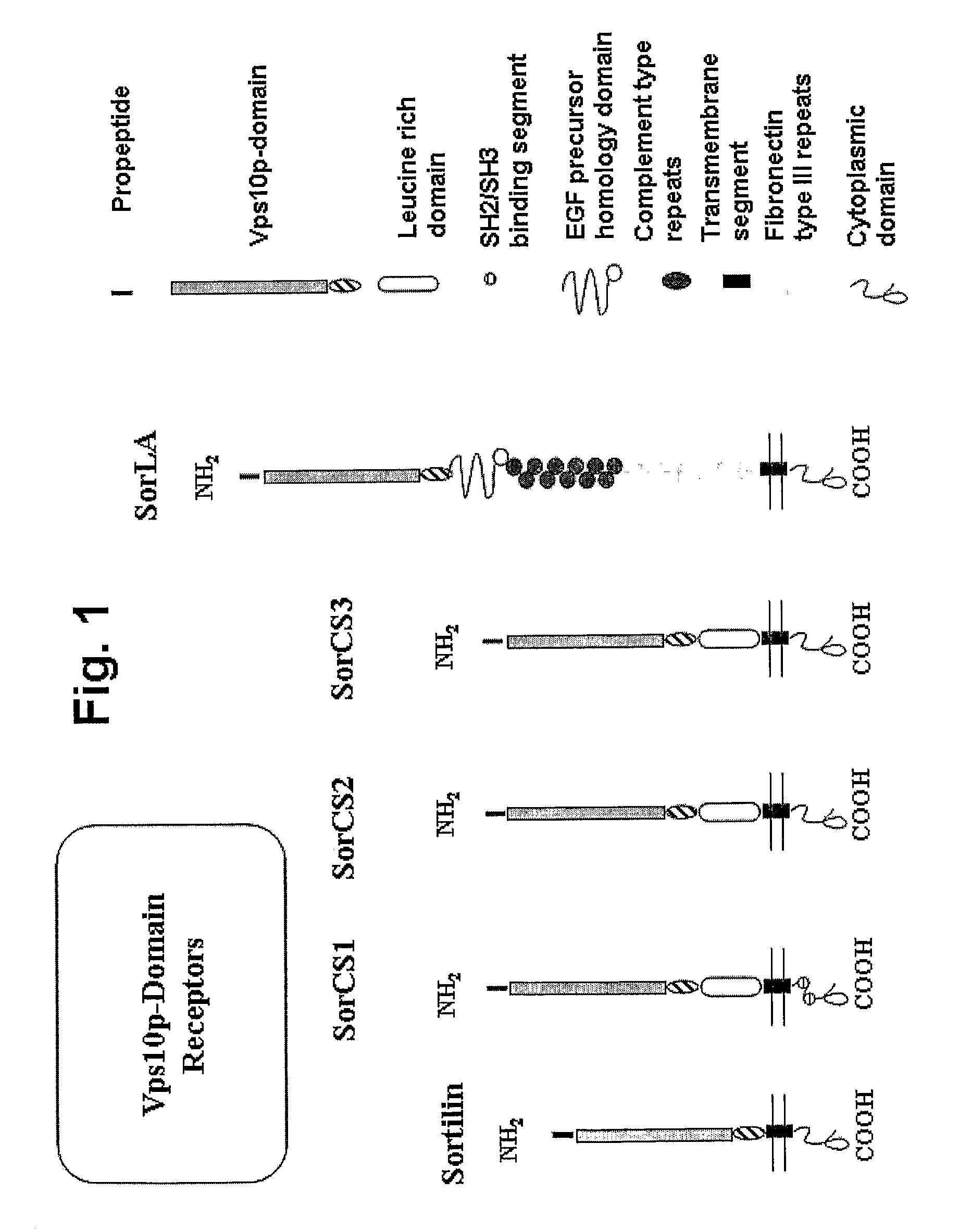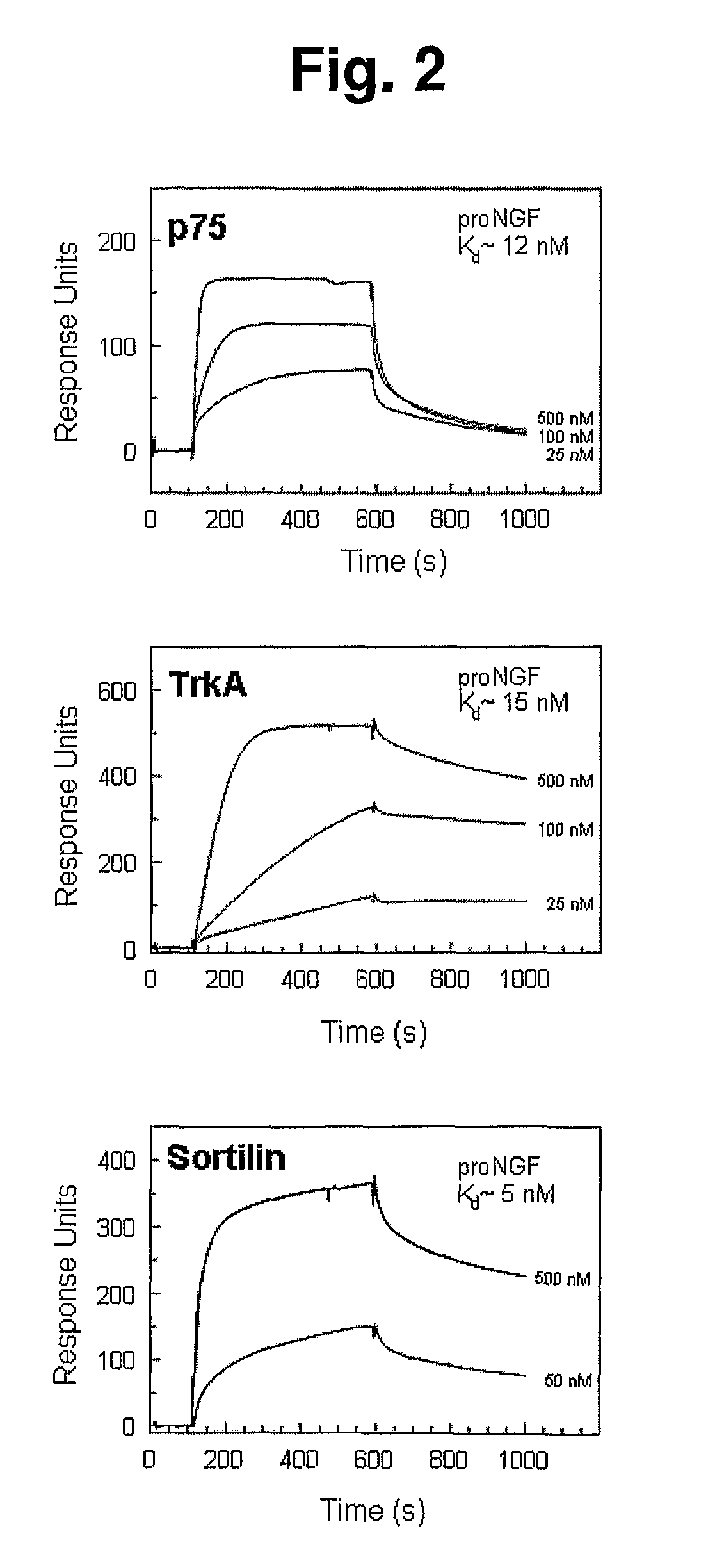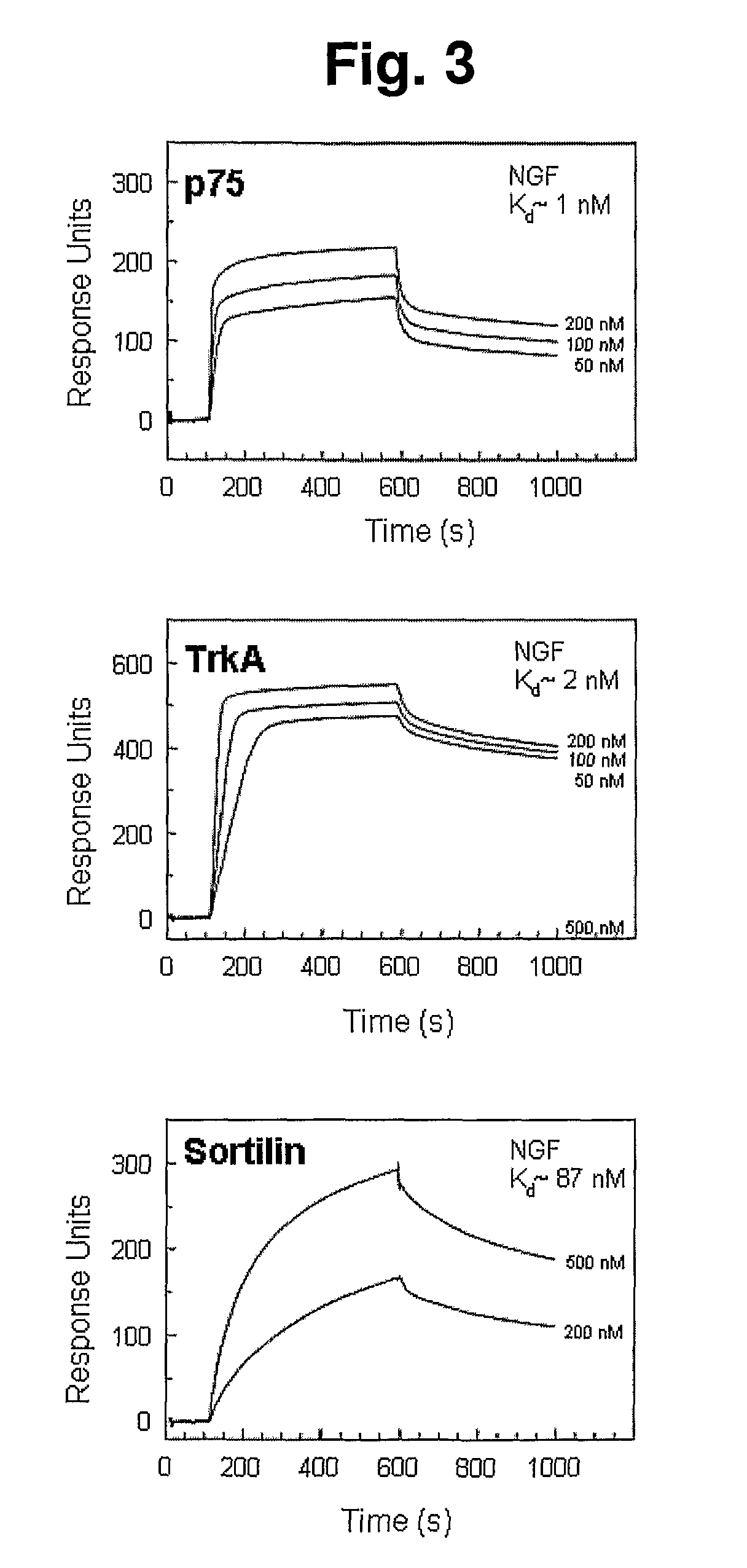Modulation of activity of proneurotrophins
a proneurotrophin and activity technology, applied in the field of proneurotrophin activity modulation, can solve the problem of failure to teach the specific binding si
- Summary
- Abstract
- Description
- Claims
- Application Information
AI Technical Summary
Benefits of technology
Problems solved by technology
Method used
Image
Examples
example 1
Materials and Proteins
[0248]To obtain tagged forms of the neurotrophin pro-domains readily for detection in SPOT analysis, constructs were prepared for each protein allowing for addition of N-terminal S-peptide and poly-histidine tags. Template cDNA for human NGF and BDNF was ATCC clones used for generation of fragments spanning residues Glu1-Arg102 of NGF (SEQ ID NO:6) and Ala1-Arg110 of BDNF (SEQ ID NO:7) using the primer pairs
[0249]
(SEQ ID NO: 45)5′GGTATTGAGGGTCGCGAACCACACTCAGAGAGCAATGTCCC3′,(SEQ ID NO: 46)3′GGGGGAAGTTGTCCTGAGTGTCCTCGTTCGCCACTCCGAGATTGAGAGGAGA5′and(SEQ ID NO: 47)5′GGTATTGAGGGTCGCGCCCCCATGAAAGAAGCAAACATCCGAGG3′,(SEQ ID NO: 48)3′CACGTTTGTACAGGTACTCCCAGGCCGCGACTCCGAGATTGAGAGGAGA5′,
with compatible overhangs for ligation independent cloning into the pET-30 Xa / LIC vector from Novagen (cat. no. 70073-3) and amplification using Phusion DNA poly merase and following the protocol as provided by manufacturer. Proteins were expressed in the BL21 / DE3 strain of E. coli, effici...
example 2
Surface Plasmon Resonance Analysis
[0251]Determination of direct binding of ligand to immobilized protein was performed on a Biacore2000 instrument (Biacore, Sweden) using CaHBS as standard running buffer (10 mM HEPES, pH 7.4, 140 mM NaCl, 2 mM CaCl2, 1 mM EGTA, and 0.005% Tween-20). A biosensor chip from Biacore (CM5, cat. no. BR-1000-14) was activated using the NHS / EDC method as described by supplier followed by coating with Sortilin to a protein density of 79 fmol / mm2, and used for affinity measurements of the recombinant pro-domains of NGF and BDNF. Regeneration of the flow cell after each cycle of ligand binding experiment was performed by two 10 uL pulses of regeneration buffer (10 mM glycine-HCl, pH 4.0, 500 mM NaCl, 20 mM EDTA, and 0.005% Tween-20) and a single injection of 0.001% SDS. Fitting of sensorgrams for affinity estimations was performed using the Biaevaluation version 3.1. Following similar protocols, immobilization of pro-dom-NGF or pro-dom-BDNF was also performed ...
example 3
Cellulose Membrane Preparation
[0252]Peptide libraries were generated for all members of the Vps10p-domain receptor gene family or specific peptide variations in terms of substitution or length of identified Sortilin binding peptides. A total of 2181 peptides was used for representation of the Sortilin gene family, corresponding to 273 peptides for Sortilin (accession code: CAA66904), 734 peptides for SorLA (accession code: NP—003096), 389 peptides for SorCS1 (accession code: NP—001013049), 382 peptides for sorCS2 (accession code: Q96PQ0), and 403 peptides for SorCS3 (accession code: CAI64579), with a 13 amino acid overlap between 16-mers.
[0253]A cellulose support is prepared as a N-modified cellulose-amino-hydroxylpropyl ether membrane, and all rounds of synthesis starts with SPOT definition by 9-fluorenyl-methoxycarbonyl-β-alanine-pentafluorophenyl ester that creates an alanine linker between peptide and membrane. Then followed an automated linear synthesis of stepwise addition of ...
PUM
| Property | Measurement | Unit |
|---|---|---|
| weight percent | aaaaa | aaaaa |
| weight percent | aaaaa | aaaaa |
| weight percent | aaaaa | aaaaa |
Abstract
Description
Claims
Application Information
 Login to View More
Login to View More - R&D
- Intellectual Property
- Life Sciences
- Materials
- Tech Scout
- Unparalleled Data Quality
- Higher Quality Content
- 60% Fewer Hallucinations
Browse by: Latest US Patents, China's latest patents, Technical Efficacy Thesaurus, Application Domain, Technology Topic, Popular Technical Reports.
© 2025 PatSnap. All rights reserved.Legal|Privacy policy|Modern Slavery Act Transparency Statement|Sitemap|About US| Contact US: help@patsnap.com



